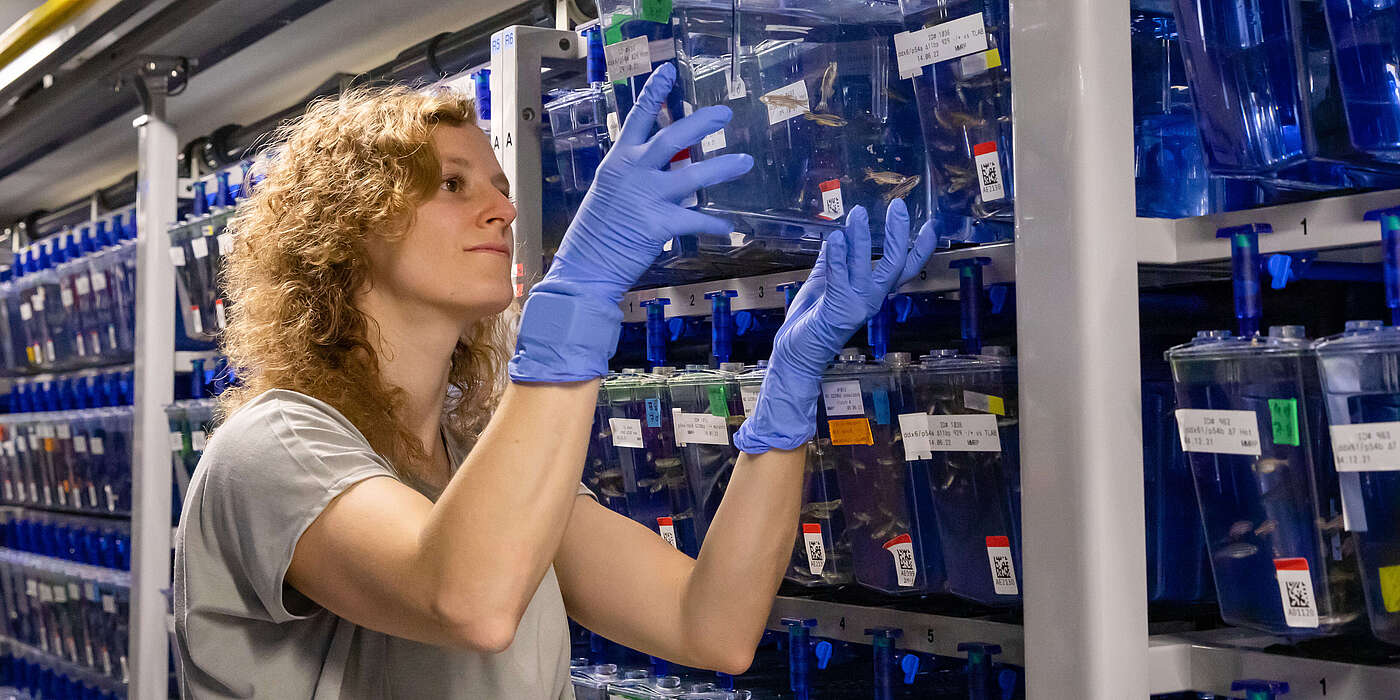Genes provide the blueprint for life, determining when and where proteins are made. This process involves two key steps: transcription, from DNA to messenger mRNA (mRNA), and translation, where mRNA is decoded into proteins. The proteins then ensure that an organism grows and a large number of specialized cells develops. Research has focused on how mRNA production is regulated, but the control of protein synthesis remains less understood – especially in the early dynamic stages of embryogenesis.
Regulation of embryonic development at the RNA level
Dr. Madalena Reimão Pinto in Alex Schier's research team at the Biozentrum of the University of Basel has now systematically investigated the influence of certain regions of mRNA molecules on the extent of protein production during zebrafish development. Their study shows that the regions at the beginning of mRNAs, so-called untranslated regions (5′ UTRs), alone are sufficient to regulate the dynamics of protein synthesis in early embryonic development.
“We knew that mRNA 5' UTRs control the recruitment of ribosomes, the protein factories in the cell. However, studying the role of 5' UTRs in development is technically challenging. We have now been able to determine how they influence the extent of mRNA translation in a live developing embryo” explains Reimão Pinto, first author of the study, published in the journal "Developmental Cell". The results provide a systematic analysis of the thousands of 5' UTRs and their importance for regulating mRNA translation during zebrafish embryogenesis.
Revealing hidden patterns with high-throughput analyses and AI
The study used cutting-edge biochemical technologies and an AI model (Danio Optimus 5-Prime) developed by Dr. Sebastian Castillo Hair, a postdoctoral fellow in Prof. Georg Seelig’s lab at the University of Washington, Seattle. This enabled the researchers to analyze over 18,000 different 5′ UTR sequences. “We discovered that certain sequence patterns have a strong influence on protein production,” says Reimão Pinto.
“Our comprehensive approach identified important regulatory elements in 5′ UTRs that affect the dynamics of protein synthesis,” explains Prof. Alex Schier. “This includes, for example, the length of the 5′ UTRs or short motifs that control ribosome recruitment.”
New insights into the control of protein production
The study provides valuable insights into the control of protein production during embryogenesis and builds a foundation for further research in this area. "Our results show that the dynamics of protein synthesis during embryogenesis can be regulated at the level of the 5' UTRs," says Schier. “Now that we know what elements in the 5' UTRs to focus on, we can start asking why they are important for development”. These findings could also be relevant for biomedical applications, such as optimizing 5' UTRs for RNA therapy.
Publication: Madalena M. Reimão-Pinto, Sebastian M. Castillo-Hair, Georg Seelig, Alexander F. Schier. The regulatory landscape of 5′ UTRs in translational control during zebrafish embryogenesis, Developmental Cell, January 15, 2025.
Contact: Communications, Heike Sacher



